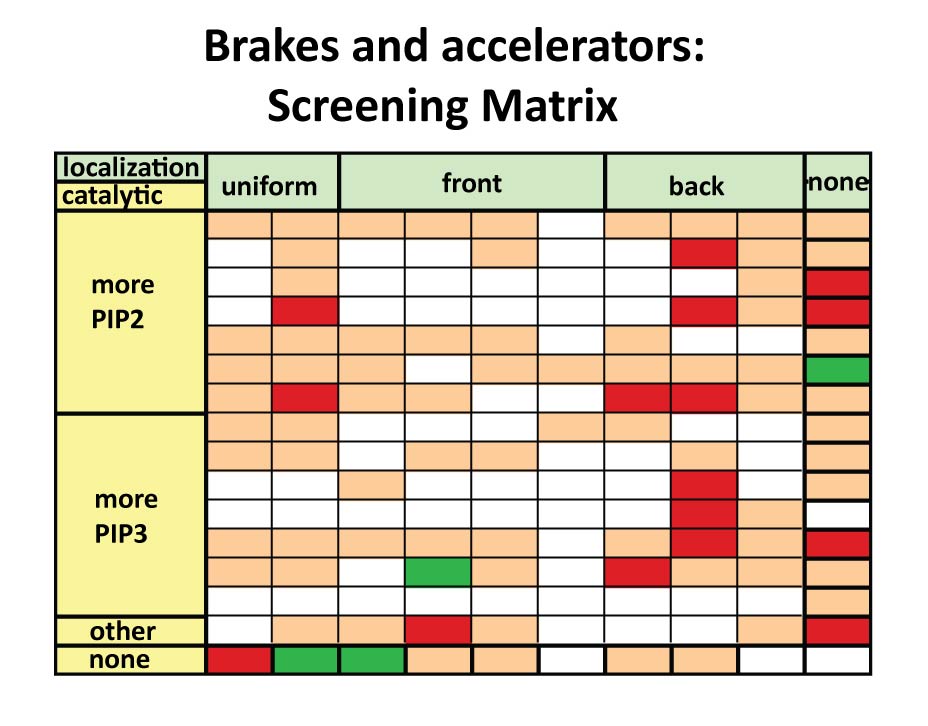Matrix of Fusion Constructs
From 2009.igem.org
We engineered and screened a large matrix of fusion constructs this summer:
Each construct consists of one catalytic domain (rows) fused to one localization domain (columns). We arranged them in categories so that it is easier to think about what we expect them to do. Each field represents a fusion construct (e.g.: localize to the front - make more PIP3; localize to the back- make more PIP2...). If you are interested what all the elements actually are check out our biobricks.
When you look at the matrix concentrate on colored fields - white fields simply indicate constructs we did not complete cloning over the summer :-(.
The colored fields however show constructs we cloned and also tested in cells. Here is what the colors mean:
Fields in 'tan' show constructs that do not significantly affect speed when compared to wildtype. Actual hits are in green and red: Fusion constructs in green act as accelerators causing cells to move significantly faster than wildtype. Any construct in red acts as brakes, slowing cells down compared to wildtype. Quite some hits fall in the last column and the last row - that's where additional controls are located (localization or catalytic domains only).
When we compare our hits with all the appropriate controls (making sure that the fusions cause an effect but not overexpression of the catalytic or localization domain alone) we can conclude that we identified 7 brakes and 1 accelerator:
Brakes:
BBa_K209063: PTEN-PI3K1(w/o Nterm) BBa_K209065: PTEN-SHIP1 BBa_K209066: PTEN-RasC da BBa_K209069: PTEN-NFA BBa_K209036: PH(PLC)-SHIP1 BBa_K209091: ACA-SHIP1 BBa_K209093: ACA-RasGda
Accelerator:
BBa_K209049: RBD(PI3K1)-RasG da)
 "
"
